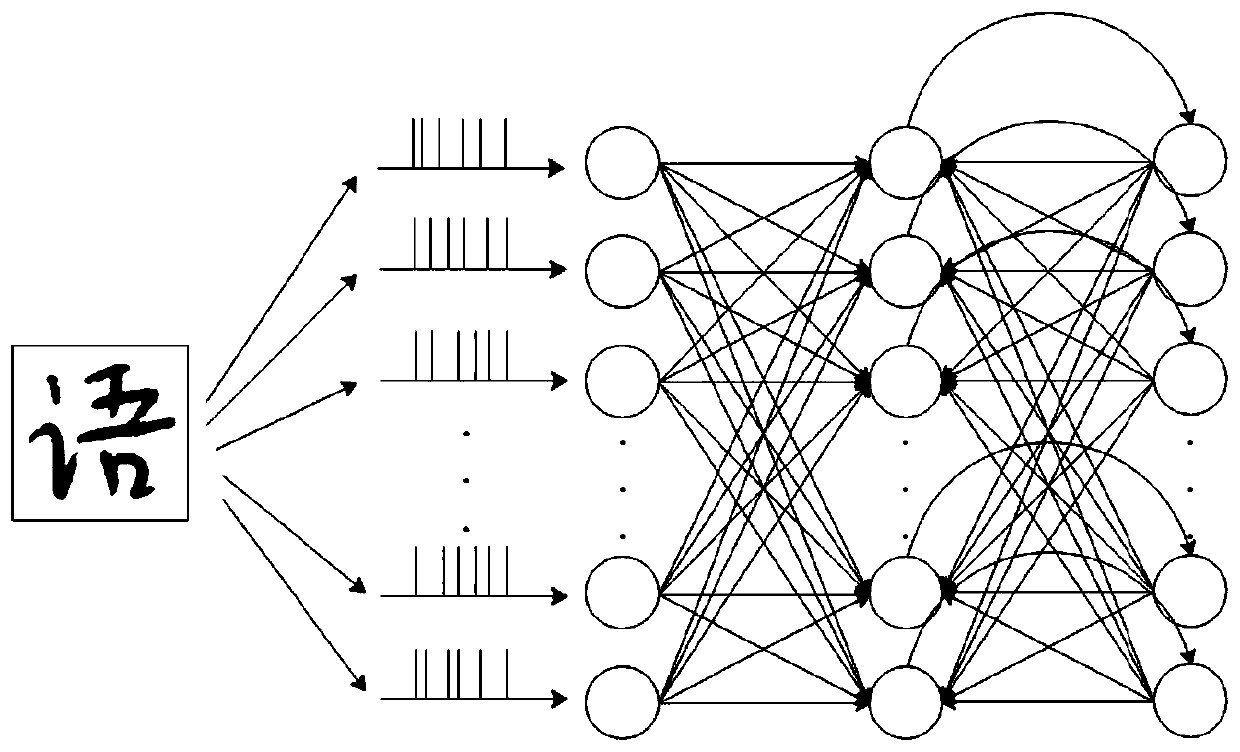STDP-based pulse neural network handwritten Chinese character recognition method
A spiking neural network and Chinese character recognition technology, applied in the field of image recognition, can solve the problem of low efficiency of handwritten Chinese character recognition
- Summary
- Abstract
- Description
- Claims
- Application Information
AI Technical Summary
Problems solved by technology
Method used
Image
Examples
Embodiment 1
[0047] The present embodiment provides a kind of STDP-based pulse neural network handwritten Chinese character recognition method, such as figure 1 As shown, the method includes the following steps:
[0048] S1: Download the HWDB1.1 offline data set in the Chinese Academy of Sciences CASIA handwritten Chinese database;
[0049] S2: Preprocessing the offline handwritten Chinese character dataset: the size of each picture in the dataset is different, and it is impossible to uniformly put the pictures into the input layer and compile them into pulse sequences, so the pictures need to be normalized, and the unified size is 64*64 pixels.
[0050] S3: Determine the number of neurons used for training: In the offline data set, the N class labels {z 1 ,z 2 ,…z n}, Each type of label adopts ISODATA unsupervised learning for similarity clustering, and the IOSDATA similarity clustering algorithm is as follows figure 2 As shown, the main steps are divided into three steps: S3.1: Ini...
PUM
 Login to View More
Login to View More Abstract
Description
Claims
Application Information
 Login to View More
Login to View More - R&D
- Intellectual Property
- Life Sciences
- Materials
- Tech Scout
- Unparalleled Data Quality
- Higher Quality Content
- 60% Fewer Hallucinations
Browse by: Latest US Patents, China's latest patents, Technical Efficacy Thesaurus, Application Domain, Technology Topic, Popular Technical Reports.
© 2025 PatSnap. All rights reserved.Legal|Privacy policy|Modern Slavery Act Transparency Statement|Sitemap|About US| Contact US: help@patsnap.com



